Instrumento de evaluación (acrónimo tigre) del proceso de cicatrización por deterioro de la integridad cutánea.
Evaluation instrument (acronym tiger) of the healing process due to the deterioration of cutaneous integrity.
Resumen
Las lesiones cutáneas abiertas a nivel mundial y latinoamericano son un problema de salud pública (ocupa los primeros lugares de morbimortalidad). En Venezuela, dada las características geográficas, históricas, demográficas, políticas, institucionales, económicas, tecnológicas, perceptuales y creencias culturales influyen en la morbimortalidad, y plantean un reto a los trabajadores de la salud (enfermeros y médicos, entre otros) con el proceso de valorar, diagnosticar, planificar, implementar y evaluar lesiones abiertas de piel. Para su logro, los instrumentos disponibles tienen dificultad de manejo por tener idiomas diferentes al español, enfoque unidimensional, estáticos, diseñados solo para determinados diagnósticos clínicos y de estricto contexto biomédico (no integral), con validez y confiabilidad no bien definida. En tal sentido, el objetivo es construir un instrumento de evaluación (IE) (acrónimo TIGRE) para el proceso de cicatrización por deterioro de la integridad cutánea. El estudio plantea el enfoque cuali-cuantitativo, no experimental, longitudinal, con una muestra de 250 ensayos a juicio del investigador. Desarrollado en tres etapas: 1) Revisión bibliográfica, 2) Construcción del instrumento, 3) Determinar las propiedades clínico-métricas: Índice de Validez de Contenido (CVI), alfa de Cronbach, correlación de Pearson, t de Student, proporciones y medias. Conclusión: el IE (acrónimo TIGRE) posee validez (contenido, constructo, criterio), confiabilidad, estabilidad y sensibilidad para medir la cicatrización. Además, dada la plena factibilidad coadyuva al proceso enfermero para acciones efectivas.
Open skin lesions worldwide and in Latin America are a public health problem (it occupies the first places of morbidity and mortality). In Venezuela, given the geographical, historical, demographic, political, institutional, economic, technological, perceptual, and cultural beliefs that influence morbidity and mortality, and they pose a challenge to health workers (nurses and doctors, among others) with the process of assessing, diagnosing, planning, implementing and evaluating open skin injuries. To achieve this, the available instruments have difficulty in handling because they have languages which are different to the Spanish, a unidimensional approach, static, designed only for certain clinical diagnoses and with a strict biomedical context (not comprehensive), with poorly defined validity and reliability. In this sense, the objective is to build an evaluation instrument (IE) (acronym TIGER) for the healing process due to deterioration of skin integrity. The study proposes a qualitative-quantitative, non-experimental, longitudinal approach, with a sample of 250 trials in the opinion of the researcher. Developed in three stages: 1) Bibliographic review, 2) Construction of the instrument, 3) Determine the clinical-metric properties: Content Validity Index (CVI), Cronbach's alpha, Pearson's correlation, Student's t, proportions and means. Conclusion: the IE (acronym TIGER) has validity (content, construct, criteria), reliability, stability and sensitivity to measure healing. In addition, given full feasibility, it helps the nursing process for effective actions.
Palabras clave
Texto completo:
PDFReferencias
Bates-Jensen, B. (1994). The pressure sore status tool: an outcome measure for pressure sores. Top Geriatric Rehabil, 9(4), 17-34.
Carrero J., Chipia J. y Castillo, D. (2016). Cicatrización cutánea: factores que influyen en su efectividad. GICOS, 1(3), 34-60.
Carrero, J., Chipia, J., Castillo, D., Carrero, E. (2016). Eficacia del apósito bioactivo natural versus convencional en cicatrización cutánea. GICOS, 1(4), 3-22.
Corral, Y. (2009). Validez y confiabilidad de los instrumentos de investigación para la recolección de datos. Revista ciencias de la educación, 19(33), 228-247.
D’Anello, S. (2010). Cumplimiento del tratamiento médico. Aspectos psicosociales. Recuperado de: http://www.saber.ula.ve/bitstream/handle/123456789/14886/capitulo10.pdf?sequence=1&isAllowed=y
European Wound Management Association (2008). Position Document: Hard-to-heal wounds: a holistic approach. London, MEP Ltd.
Falanga. V. (2004). European Wound Management Association (EWMA). Position Document: Wound Bed reparation in Practice. London: MEP Ltd.
Fernández, V., Muñoz, V., Fornes, B. y García, M. (2008). La cicatrización de las heridas. Enfermería Dermatológica, 2(3), 8-15.
Ferrell, B., Artinian, B. y Sessing D. (1995). The Sessing scale for assessment of pressure ulcer healing. J Am Geriatr. 43(1), 37-40.
Hernández R., Fernández C. y Baptista P. (2006). Metodología de la investigación (4a. Ed.) México D.F.: Mc Graw Hill.
Hernández, R., (2011). Instrumentos de recolección de datos en Ciencias Sociales y Ciencias Biomédicas. Mérida, Venezuela: Consejo de Publicaciones de la Universidad de Los Andes.
Krasner, D. (1997). Wound Healing Scale, version 1.0: a proposal. Advances in Wound Care. Journal for Prevention and Healing, 10(5), 82-85.
Organización Mundial de la Salud (2018). Atención primaria de salud. Recuperado de: http://www.who.int/topics/primary_health_care/es/
Palomar, F. y Fornes, B. (2013). Úlceras y heridas como consecuencia de una iatrogenia. Enfermería dermatológica, (20),8-13.
Perdomo, E., Pérez, P., Flores, O., Pérez, M., Volo, G., Montes, E., Bañón, N. (2014a). Uso racional del material de curas (I). Cura tradicional en heridas agudas, Bolcan, 6(2), 1-8
Perdomo, E., Pérez, P., Flores, O., Pérez, M., Volo, G., Montes, E., Bañón, N. (2014b). Uso racional del material de curas (II). Cura tradicional en heridas agudas, Bolcan, 6(3), 1-8
Perdomo, E., Pérez, P., Flores, O., Pérez, M., Volo, G., Montes, E., Bañón, N. (2014c). Uso racional del material de curas (III). Cura tradicional en heridas agudas, Bolcan, 6(4), 1-8
Restrepo-Medrano, J., (2011). Measure healing in pressure ulcers. What do we have? Gerokomos, 22(1), 35-42.
Restrepo-Medrano, J. (2011). Development of a wound healing index for chronic wounds. Gerokomos, 22 (4), 176-183.
Sanada, H., Moriguchi, T., Miyachi, Y., Ohura, T., Nakajo, T., Tokunaga, K…, Kitagawa, A. (2004). Reliability and validity of DESIGN, a tool that classifies pressure ulcer severity and monitors healing. J Wound Care, 13(1), 13-18
Schultz, G., Barillo, D., Mozingo, D., Chin, B. y Wound Bed Advisory Board Members (2004). Wound bed preparation and a brief history of TIME. International wound journal, 1(1), 19-32.
Shea D. (2011). Pressure Sores Classification and Management. Clin Orthop Rel Res 112, 89-100.
Supo, J. (2013). Cómo validar un instrumento - La guía para validar un instrumento en 10 pasos. Lima, Perú, Autor.
Sussman, C. y Swanson, G. (1997). Utility of the Sussman Wound Healing Tool in predicting wound healing outcomes in physical therapy. Adv Wound Care. 10(5), 74-77.
Thomas, D., Rodeheaver, G., Bartolucci, A., Franz, R., Sussman, C. Ferrell, B…, Maklebust, J. (1997). Pressure ulcer scale for healing: derivation and validation of the PUSH tool. The PUSH Task Force. Adv Wound Care, 10(5), 96-101.
Tizón, E., Pazos, S., Álvarez, M., Espino M. y Quintela, M. (2013). Cura en ambiente húmedo en úlceras Crónicas a través del Concepto TIME. Recomendaciones basadas en la evidencia. Enfermería dermatológica. 20.
Villalba, L. y Bilevich, E. (2008). Consenso sobre cicatrización de heridas. Buenos Aires: Sociedad Argentina de Dermatología.
Winter, G. (1962). Formation of the scab and the rate of epithelisation of superficial wounds in the skin of the young domestic pig. Nature, 193, 293-4.
Enlaces refback
- No hay ningún enlace refback.
Depósito Legal Electrónico: ME2016000090
ISSN Electrónico: 2610-797X
DOI: https://doi.org/10.53766/GICOS
| Se encuentra actualmente registrada y aceptada en las siguientes base de datos, directorios e índices: | |||
 | |||
 |  |  |  |
 | 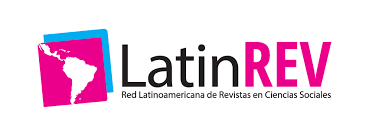 | ||
 | 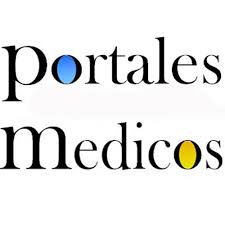 |  |  |
 |  | 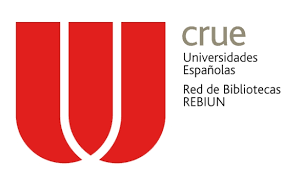 | 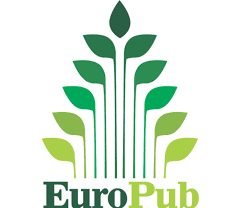 |
 |  | 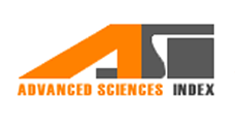 | 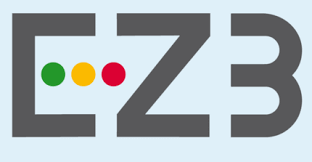 |
 |  |  | 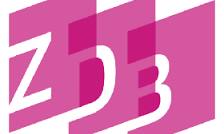 |
![]()
Todos los documentos publicados en esta revista se distribuyen bajo una
Licencia Creative Commons Atribución -No Comercial- Compartir Igual 4.0 Internacional.
Por lo que el envío, procesamiento y publicación de artículos en la revista es totalmente gratuito.

